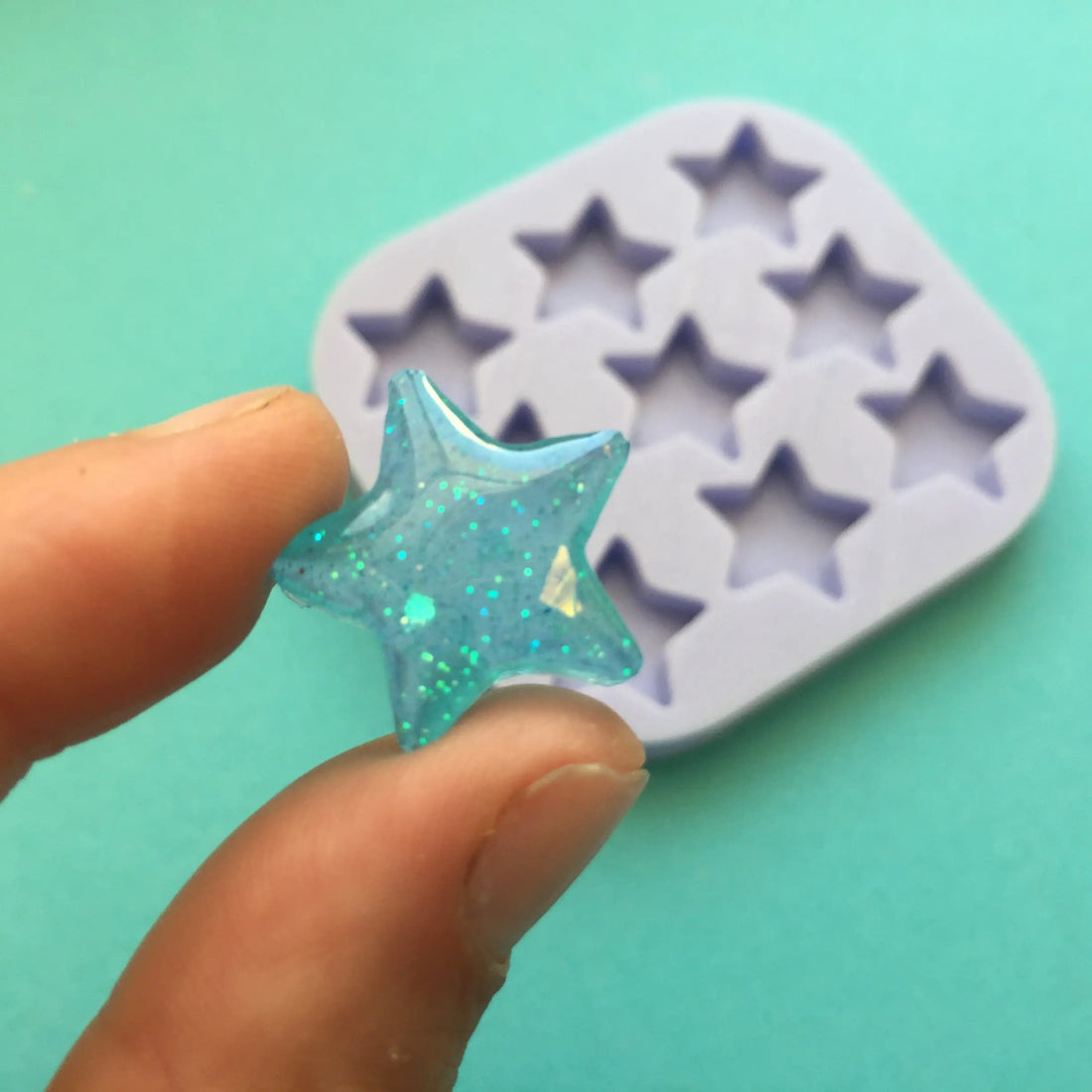
Resin Tips: Why is my resin still tacky?
Share
Have you ever finished a resin project only to find that the surface is still tacky to the touch? This common issue can be frustrating, but understanding why your resin is still tacky can help you prevent it in the future.
What is tacky resin?
Tacky resin refers to resin that has not fully cured and remains sticky or tacky to the touch. This can happen for a variety of reasons. If you are having issues with tacky resin, it's important to understand what can cause this. By understanding what causes tacky resin, you will be able to identify the issue/s and rectify them, as well as avoiding it from happening in future projects.
Why does resin become tacky?
Resin becomes tacky when the chemical reaction that causes it to harden is interrupted or incomplete. This can happen for a number of reasons, which will be addressed further on in this article.
What causes resin to remain tacky?
Resin can remain tacky for several reasons, including improper mixing ratios, inadequate curing time, or environmental factors such as humidity and temperature. Even a small deviation from the recommended mixing ratio can result in sticky resin that never fully cures.
Moisture Contamination
One of the primary reasons for tacky resin is moisture contamination. Even a small amount of moisture in the environment or on the surface you are working on can interfere with the curing process of the resin, leading to a sticky finish.
Improper mixing ratios
To ensure the best results, always carefully measure and mix the resin and hardener according to the manufacturer's instructions. Use precise measuring tools and follow the recommended ratios closely. Avoid eyeballing or estimating the amounts, as even small deviations can have a significant impact on the final outcome.
Improper Mixing
Another common cause of tacky resin is improper mixing. Resin consists of two components that need to be mixed in the correct ratio and for the right amount of time. Failure to mix the components thoroughly can result in uncured spots that remain tacky. Make sure to mix your resin for a sufficient time as well - 2 to 3 minutes of mixing time is the general rule.
Temperature and Humidity
The temperature and humidity levels in your workspace can also impact the curing process of resin. Extreme temperatures or high humidity can slow down the curing process or prevent it from fully curing, leaving the resin tacky to the touch.
Old or Contaminated Resin
If you are using old or contaminated resin, it may not cure properly, resulting in a tacky finish. Make sure to store your resin properly in a cool, dry place and avoid using resin that has been sitting for too long or has been contaminated with foreign substances.
UV Exposure
Some types of resin require exposure to UV light to cure properly. If the resin is not exposed to enough UV light or if the curing time is insufficient, it can remain tacky. Make sure to follow the manufacturer's instructions regarding UV exposure for the specific type of resin you are using.
How to prevent tacky resin
To prevent tacky resin, always follow the manufacturer's instructions for mixing ratios and curing times. Make sure to mix the resin and hardener thoroughly, scraping the sides and bottom of the container to ensure a complete blend. Additionally, work in a well-ventilated area with stable temperature and humidity levels to promote proper curing.
Measure Accurately
One of the main reasons resin can end up tacky is due to inaccurate measurements. Make sure to follow the instructions provided with your resin kit carefully and measure out the resin and hardener in the correct ratios. Even a small deviation can lead to tackiness.
For more information on this topic, visit The Ultimate Guide to Mixing Resin Perfectly and The Most Accurate Ways to Measure Resin.
Mix Thoroughly
Properly mixing the resin and hardener is crucial to ensure a smooth and glossy finish. Take your time to mix the components thoroughly, scraping the sides and bottom of the mixing container to incorporate all the resin. Incomplete mixing can result in tacky spots. As mentioned earlier, make sure to mix your resin for a sufficient time as well (2 to 3 minutes of mixing time is the general rule).
Avoid Moisture
Moisture is the enemy of resin. Make sure to work in a dry environment and keep your resin supplies tightly sealed when not in use. Even a small amount of moisture in the air can cause tackiness in your resin projects.
Protect from UV Light
Resin is sensitive to UV light, which can cause it to cure improperly and become tacky. When working with resin, make sure to protect your project from direct sunlight or UV exposure. Store finished pieces in a dark, cool place to prevent tackiness.
Can tacky resin be fixed?
If you find that your resin has become tacky, don't worry! There are ways to fix it.
Fixing tacky resin
If your resin has already cured and is still tacky, you may be able to salvage the project. One method is to apply a thin layer of clear resin over the sticky surface and allow it to cure properly. This additional layer can help seal the sticky layer underneath and provide a smooth finish.
Identify the Cause of Tackiness
Before attempting to fix tacky resin, it's important to understand why it may have occurred in the first place. Tackiness can be caused by improper mixing ratios, insufficient curing time, or environmental factors such as humidity. By identifying the root cause, you can take the necessary steps to address the issue effectively.
Apply Heat
If you are working in low room temperatures, one effective method for fixing tacky resin is to apply heat to the affected area. Using a heat gun or hairdryer on a low setting, gently warm the resin to help it cure fully. Be careful not to overheat the resin, as this will cause damage to your project.
Sand the Surface
If the resin remains tacky after applying heat, you may need to sand the surface to remove the sticky layer. Use fine-grit sandpaper to gently sand the affected area until it feels smooth to the touch. Wipe away any dust with a clean cloth before applying a new layer of resin.
Conclusion
Understanding why your resin is still tacky is the first step in preventing this common issue. By following proper mixing and curing procedures, as well as controlling environmental factors, you can ensure that your resin projects cure smoothly and without stickiness. Remember, patience and attention to detail are key when working with resin to achieve professional results.
